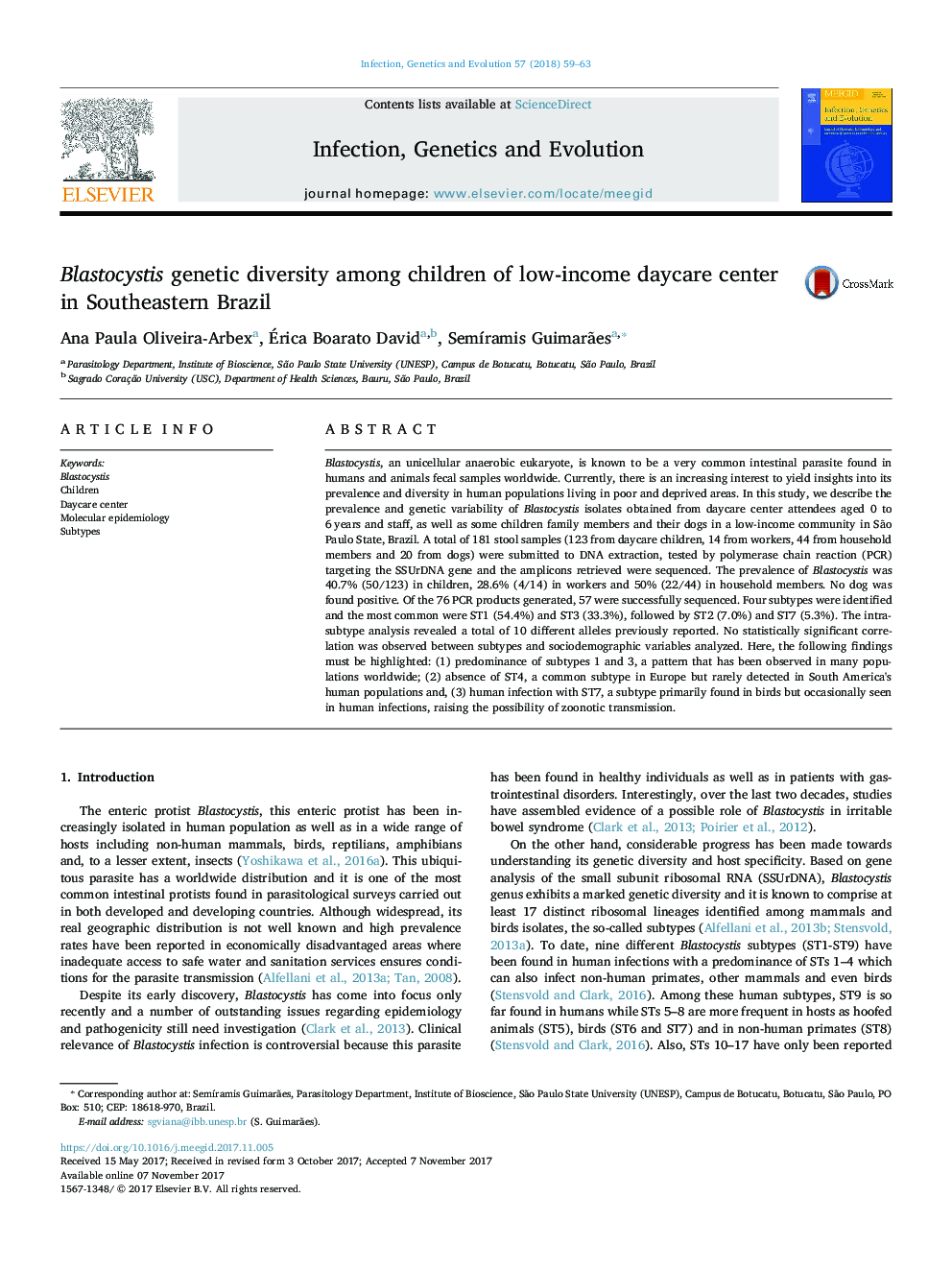| Article ID | Journal | Published Year | Pages | File Type |
|---|---|---|---|---|
| 8647016 | Infection, Genetics and Evolution | 2018 | 5 Pages |
Abstract
Blastocystis, an unicellular anaerobic eukaryote, is known to be a very common intestinal parasite found in humans and animals fecal samples worldwide. Currently, there is an increasing interest to yield insights into its prevalence and diversity in human populations living in poor and deprived areas. In this study, we describe the prevalence and genetic variability of Blastocystis isolates obtained from daycare center attendees aged 0 to 6 years and staff, as well as some children family members and their dogs in a low-income community in São Paulo State, Brazil. A total of 181 stool samples (123 from daycare children, 14 from workers, 44 from household members and 20 from dogs) were submitted to DNA extraction, tested by polymerase chain reaction (PCR) targeting the SSUrDNA gene and the amplicons retrieved were sequenced. The prevalence of Blastocystis was 40.7% (50/123) in children, 28.6% (4/14) in workers and 50% (22/44) in household members. No dog was found positive. Of the 76 PCR products generated, 57 were successfully sequenced. Four subtypes were identified and the most common were ST1 (54.4%) and ST3 (33.3%), followed by ST2 (7.0%) and ST7 (5.3%). The intra-subtype analysis revealed a total of 10 different alleles previously reported. No statistically significant correlation was observed between subtypes and sociodemographic variables analyzed. Here, the following findings must be highlighted: (1) predominance of subtypes 1 and 3, a pattern that has been observed in many populations worldwide; (2) absence of ST4, a common subtype in Europe but rarely detected in South America's human populations and, (3) human infection with ST7, a subtype primarily found in birds but occasionally seen in human infections, raising the possibility of zoonotic transmission.
Related Topics
Life Sciences
Agricultural and Biological Sciences
Ecology, Evolution, Behavior and Systematics
Authors
Ana Paula Oliveira-Arbex, Ãrica Boarato David, SemÃramis Guimarães,
